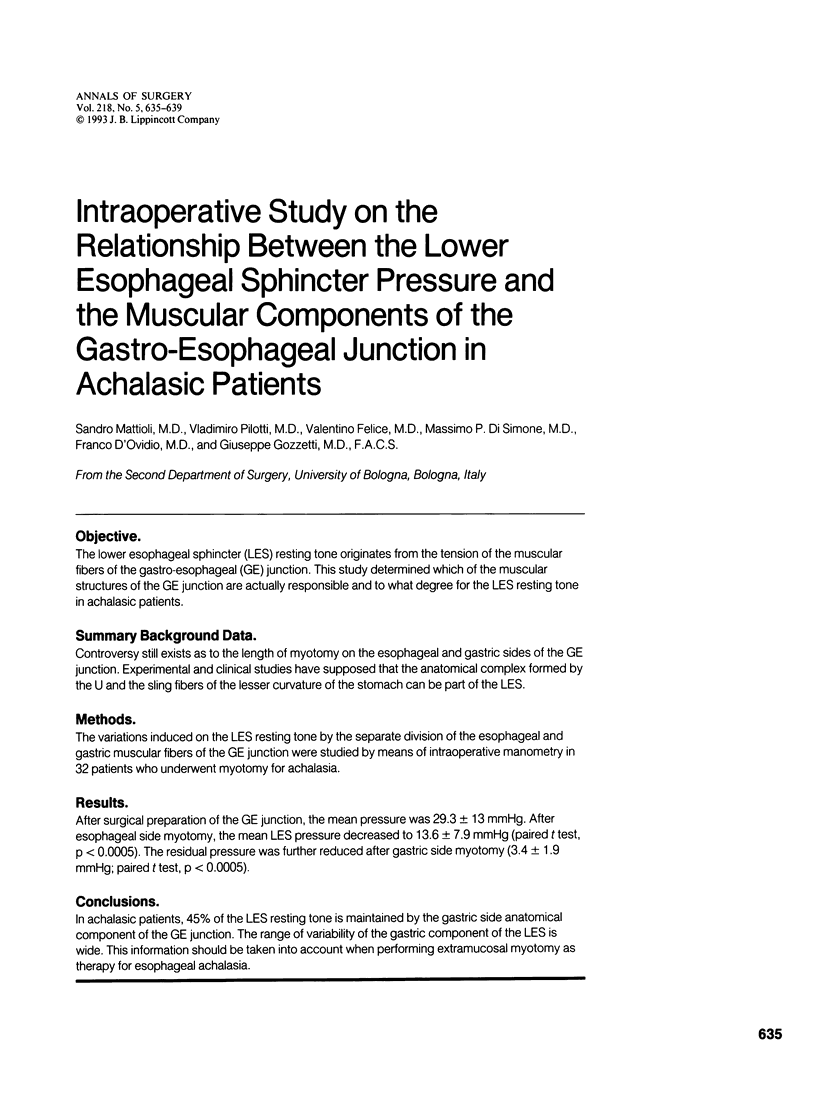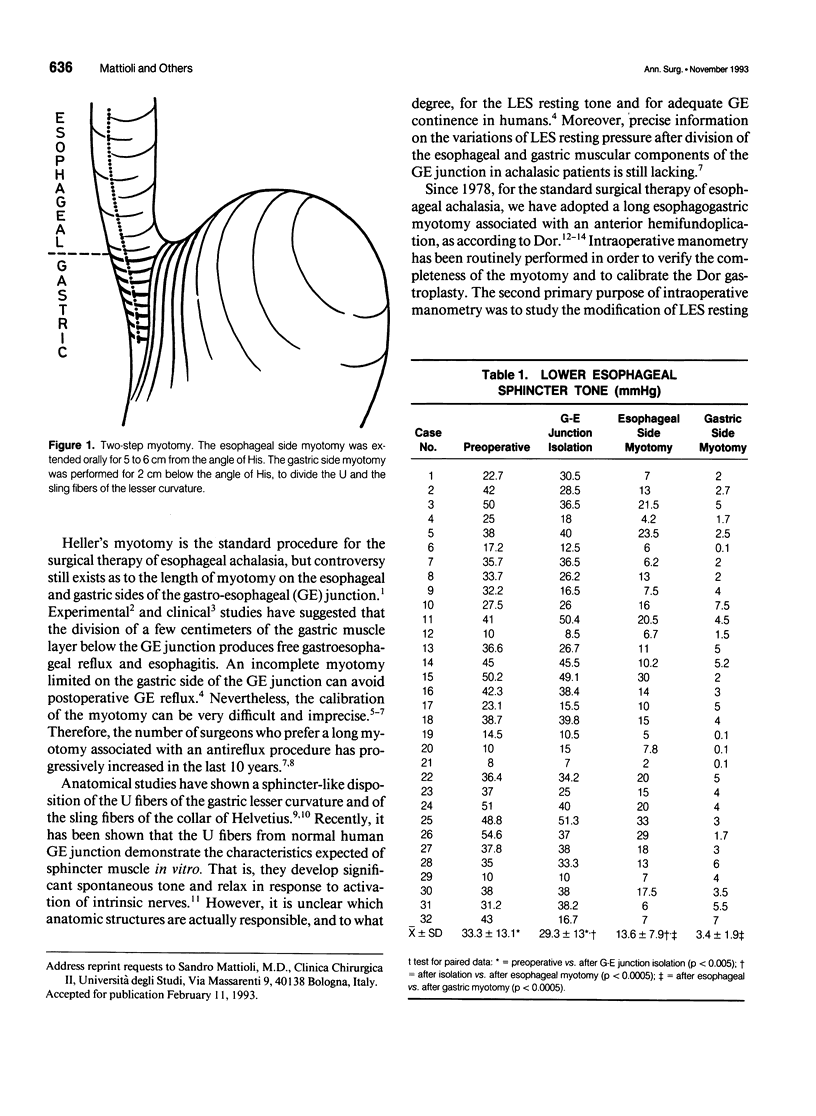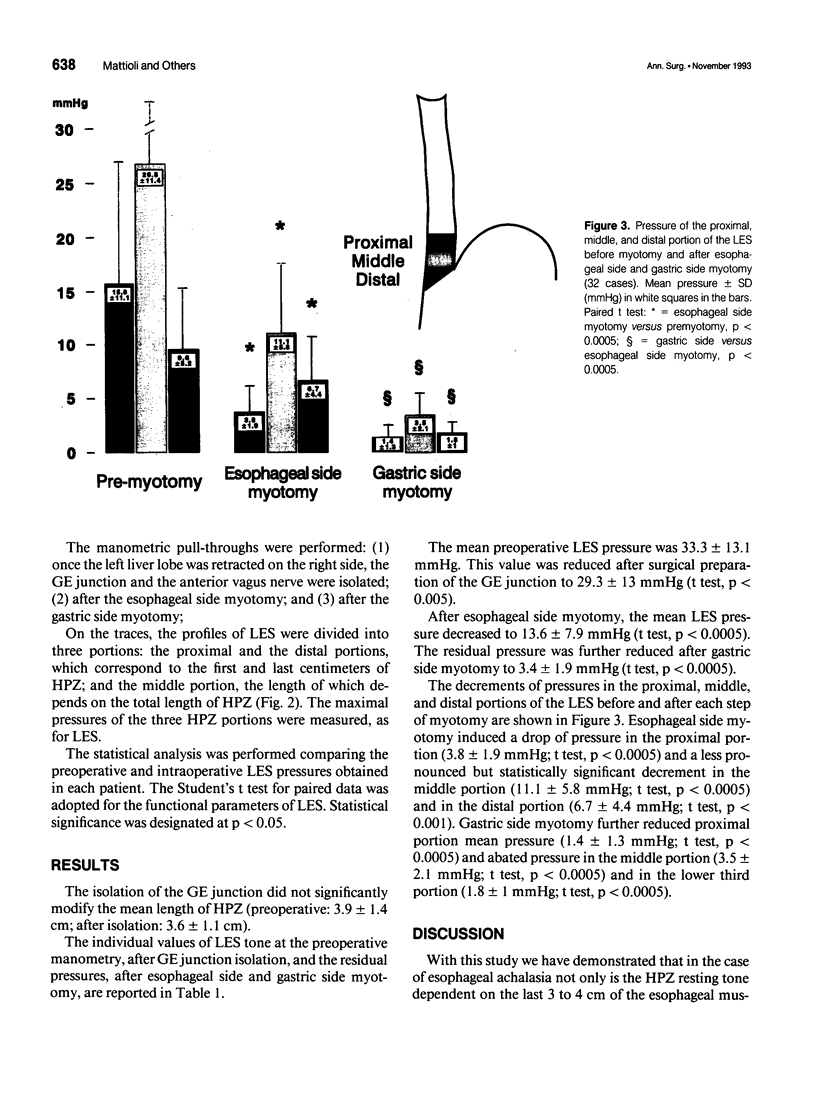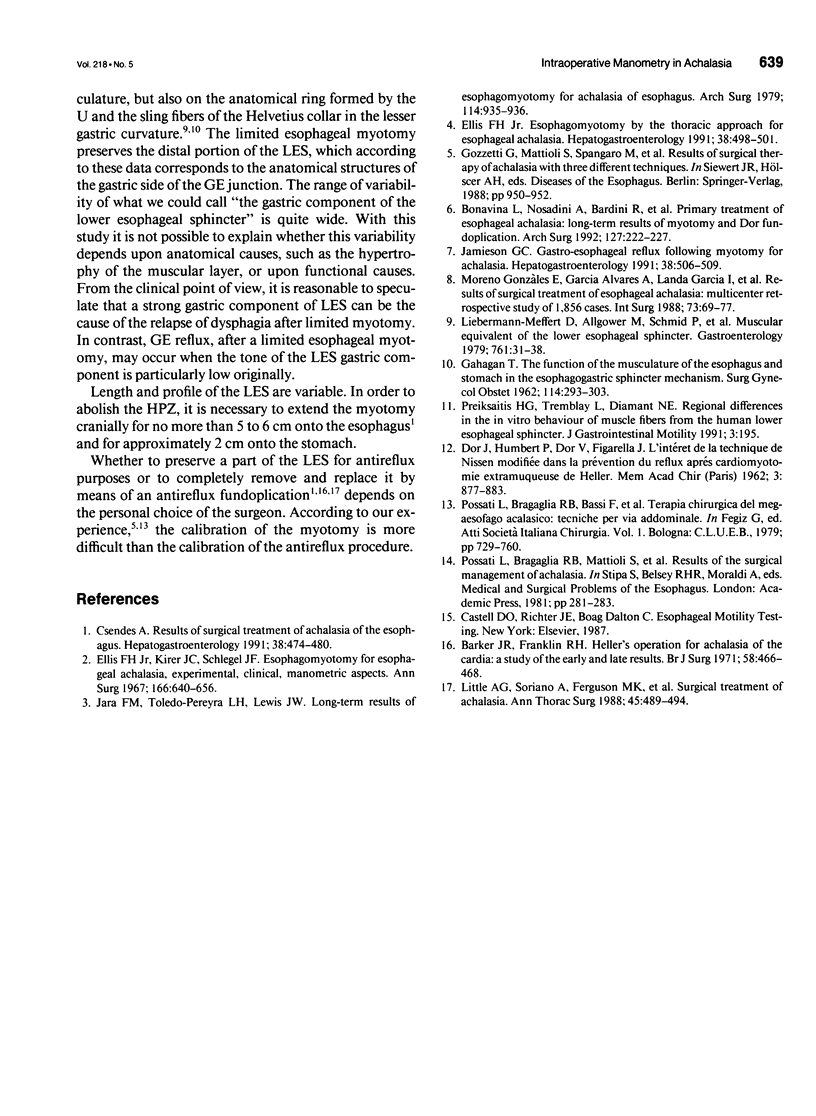Abstract
OBJECTIVE. The lower esophageal sphincter (LES) resting tone originates from the tension of the muscular fibers of the gastro-esophageal (GE) junction. This study determined which of the muscular structures' of the GE junction are actually responsible and to what degree for the LES resting tone in achalasic patients. SUMMARY BACKGROUND DATA. Controversy still exists as to the length of myotomy on the esophageal and gastric sides of the GE junction. Experimental and clinical studies have supposed that the anatomical complex formed by the U and the sling fibers of the lesser curvature of the stomach can be part of the LES. METHODS. The variations induced on the LES resting tone by the separate division of the esophageal and gastric muscular fibers of the GE junction were studied by means of intraoperative manometry in 32 patients who underwent myotomy for achalasia. RESULTS. After surgical preparation of the GE junction, the mean pressure was 29.3 +/- 13 mmHg. After esophageal side myotomy, the mean LES pressure decreased to 13.6 +/- 7.9 mmHg (paired t test, p < 0.0005). The residual pressure was further reduced after gastric side myotomy (3.4 +/- 1.9 mmHg; paired t test, p < 0.0005). CONCLUSIONS. In achalasic patients, 45% of the LES resting tone is maintained by the gastric side anatomical component of the GE junction. The range of variability of the gastric component of the LES is wide. This information should be taken into account when performing extramucosal myotomy as therapy for esophageal achalasia.
Full text
PDF




Selected References
These references are in PubMed. This may not be the complete list of references from this article.
- Barker J. R., Franklin R. H. Heller's operation for achalasia of the cardia. A study of the early and late results. Br J Surg. 1971 Jun;58(6):466–468. doi: 10.1002/bjs.1800580618. [DOI] [PubMed] [Google Scholar]
- Bonavina L., Nosadini A., Bardini R., Baessato M., Peracchia A. Primary treatment of esophageal achalasia. Long-term results of myotomy and Dor fundoplication. Arch Surg. 1992 Feb;127(2):222–227. doi: 10.1001/archsurg.1992.01420020112016. [DOI] [PubMed] [Google Scholar]
- Csendes A. Results of surgical treatment of achalasia of the esophagus. Hepatogastroenterology. 1991 Dec;38(6):474–480. [PubMed] [Google Scholar]
- Ellis F. H. Esophagomyotomy by the thoracic approach for esophageal achalasia. Hepatogastroenterology. 1991 Dec;38(6):498–501. [PubMed] [Google Scholar]
- Ellis F. H., Jr, Kiser J. C., Schlegel J. F., Earlam R. J., McVey J. L., Olsen A. M. Esophagomyotomy for esophageal achalasia: experimental, clinical, and manometric aspects. Ann Surg. 1967 Oct;166(4):640–656. doi: 10.1097/00000658-196710000-00012. [DOI] [PMC free article] [PubMed] [Google Scholar]
- GAHAGAN T. The function of the musculature of the esophagus and stomach in the esophagogastric sphincter mechanism. Surg Gynecol Obstet. 1962 Mar;114:293–303. [PubMed] [Google Scholar]
- Jamieson G. G. Gastro-esophageal reflux following myotomy for achalasia. Hepatogastroenterology. 1991 Dec;38(6):506–509. [PubMed] [Google Scholar]
- Jara F. M., Toledo-Pereyra L. H., Lewis J. W., Magilligan D. J., Jr Long-term results of esophagomyotomy for achalasia of esophagus. Arch Surg. 1979 Aug;114(8):935–936. doi: 10.1001/archsurg.1979.01370320067011. [DOI] [PubMed] [Google Scholar]
- Liebermann-Meffert D., Allgöwer M., Schmid P., Blum A. L. Muscular equivalent of the lower esophageal sphincter. Gastroenterology. 1979 Jan;76(1):31–38. [PubMed] [Google Scholar]
- Little A. G., Soriano A., Ferguson M. K., Winans C. S., Skinner D. B. Surgical treatment of achalasia: results with esophagomyotomy and Belsey repair. Ann Thorac Surg. 1988 May;45(5):489–494. doi: 10.1016/s0003-4975(10)64520-1. [DOI] [PubMed] [Google Scholar]
- Moreno González E., Garcia Alvarez A., Landa Garcia I., Gómez Gutierrez M., Rico Selas P., Garcia Garcia I., Jover Navalón J. M., Arias Diaz J. Results of surgical treatment of esophageal achalasia. Multicenter retrospective study of 1,856 cases. GEEMO (Groupe Européen Etude Maladies Oesophagéennes) Multicentric Retrospective Study. Int Surg. 1988 Apr-Jun;73(2):69–77. [PubMed] [Google Scholar]


